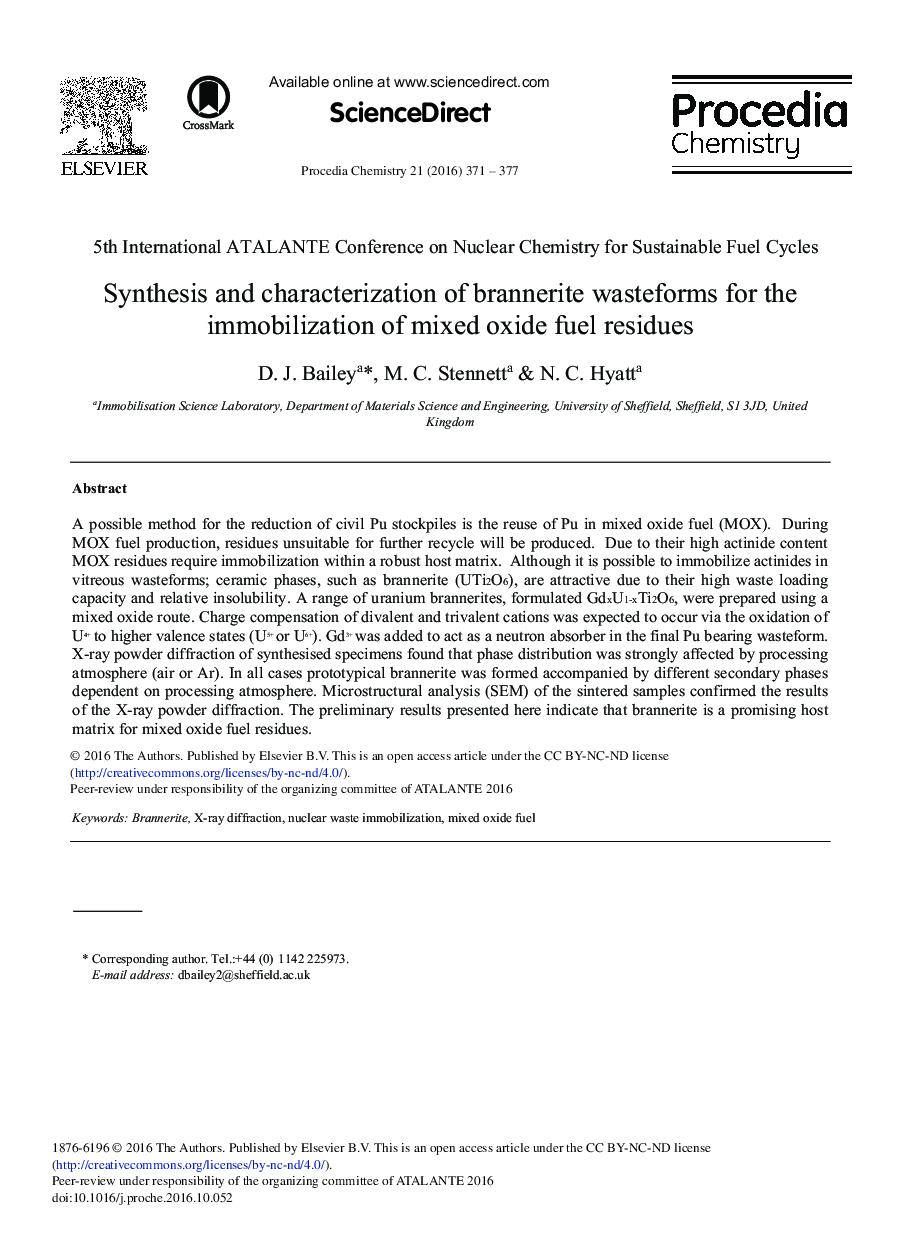| Article ID | Journal | Published Year | Pages | File Type |
|---|---|---|---|---|
| 4910953 | Procedia Chemistry | 2016 | 7 Pages |
A possible method for the reduction of civil Pu stockpiles is the reuse of Pu in mixed oxide fuel (MOX). During MOX fuel production, residues unsuitable for further recycle will be produced. Due to their high actinide content MOX residues require immobilization within a robust host matrix. Although it is possible to immobilize actinides in vitreous wasteforms; ceramic phases, such as brannerite (UTi2O6), are attractive due to their high waste loading capacity and relative insolubility. A range of uranium brannerites, formulated GdxU1-xTi2O6, were prepared using a mixed oxide route. Charge compensation of divalent and trivalent cations was expected to occur via the oxidation of U4+ to higher valence states (U5+ or U6+). Gd3+ was added to act as a neutron absorber in the final Pu bearing wasteform. X-ray powder diffraction of synthesised specimens found that phase distribution was strongly affected by processing atmosphere (air or Ar). In all cases prototypical brannerite was formed accompanied by different secondary phases dependent on processing atmosphere. Microstructural analysis (SEM) of the sintered samples confirmed the results of the X-ray powder diffraction. The preliminary results presented here indicate that brannerite is a promising host matrix for mixed oxide fuel residues.
